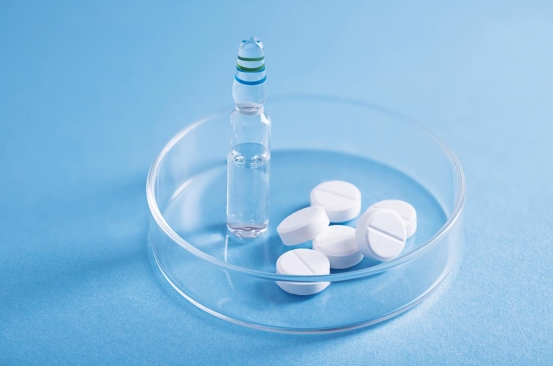Industry Information
Jul. 15, 2025
The pharmaceutical industry continues to evolve, balancing innovation, cost-efficiency, and global health needs. At the core of nearly all medicinal products are active pharmaceutical ingredients (APIs), which can be broadly classified into two categories: synthetic APIs and natural APIs. Though both aim to deliver therapeutic outcomes, their differences in origin, production, and market trends significantly influence how drugs are developed, manufactured, and regulated worldwide.

Synthetic APIs are created through controlled chemical reactions in laboratories or industrial reactors. Their production is typically linear, predictable, and scalable, enabling high batch consistency and precise control over purity and potency. A well-known example is Ibuprofen, a synthetic API that has become a staple in anti-inflammatory and pain-relief medications.
In contrast, natural APIs are derived from biological sources—such as plants, fermentation processes, or animal tissues. They include compounds like Ascorbic Acid (Vitamin C), which is commonly produced through microbial fermentation. The appeal of natural APIs lies in their alignment with consumer demand for naturally sourced, minimally processed, and “clean label” ingredients, particularly in the nutraceutical and botanical drug sectors.
The development of natural APIs often presents greater complexity compared to synthetic APIs. Variability in biological raw materials, seasonal availability, and extraction yields can lead to batch inconsistencies. In some cases, active compounds may be present in low concentrations, requiring extensive purification and characterization.
Meanwhile, synthetic APIs offer greater predictability. Chemical synthesis allows precise control of reaction pathways, impurity profiles, and scalability. This makes them the preferred choice for high-volume generic drugs, where cost and consistency are critical.
However, the rise of green chemistry is challenging traditional synthetic routes. Manufacturers are now seeking cleaner, more sustainable methods to produce synthetic APIs, often incorporating biocatalysis or solvent-free processes—bringing synthetic and natural approaches closer than ever before.
Both synthetic APIs and natural APIs are subject to rigorous regulation. However, natural APIs often face more complex approval processes due to their structural variability and source-related risks. Regulatory agencies now require detailed source traceability, sustainability assessments, and reproducible manufacturing protocols for natural APIs used in pharmaceuticals.
In contrast, synthetic APIs often benefit from well-established pharmacopoeial standards, monographs, and validated analytical methods. This facilitates smoother approval pathways, particularly for generics and exports to highly regulated markets like the U.S., EU, and Japan.
For companies exporting natural APIs to strict markets, such as Germany, South Korea, or Canada, additional documentation may be required to prove ecological sourcing, absence of heavy metals, and consistent bioactivity.
Market demand for natural APIs often fluctuates with seasonal trends. For instance, Ascorbic Acid, a common natural API, sees increased global demand during winter months due to its role in immune-support formulations. Similarly, herbal-derived APIs used in cold and flu remedies tend to spike seasonally in countries like Russia, Brazil, and Southeast Asian nations.
Synthetic APIs such as Ibuprofen tend to have more stable year-round demand but may experience temporary surges during viral outbreaks or public health emergencies, as seen during the COVID-19 pandemic.
Export-focused manufacturers must remain agile to meet these seasonal variations. Accurate demand forecasting, flexible production scheduling, and regulatory alignment with destination markets are essential to maintain competitiveness.

As consumer preferences and environmental considerations evolve, both synthetic APIs and natural APIs are undergoing transformations. Synthetic APIs are becoming greener and more efficient, while natural APIs are gaining scientific validation and structured regulatory frameworks.
Rather than seeing them as competitors, modern pharmaceutical science increasingly views natural APIs and synthetic APIs as complementary. Some of the most promising therapies—particularly in oncology, immunology, and chronic disease—use hybrid strategies that combine the reliability of synthetic APIs with the bioactivity of natural APIs.
Choosing between natural APIs and synthetic APIs depends on numerous factors: target market, therapeutic area, cost, regulatory complexity, and patient expectations. While synthetic APIs dominate mass-market production due to consistency and cost-efficiency, natural APIs offer a unique value in niche therapeutics, personalized medicine, and seasonal product lines.
In a globalized, highly regulated, and rapidly evolving pharmaceutical industry, both types of APIs will continue to play essential—and increasingly integrated—roles. Understanding their strengths and limitations is critical for companies that want to stay competitive in both regulated and emerging markets.
Tianjin Chengyi International Trading Co., Ltd.
8th floor 5th Building of North America N1 Cultural and Creative Area,No. 95 South Sports Road, Xiaodian District, Taiyuan, Shanxi, China.
+86 351 828 1248 /
Navigation
